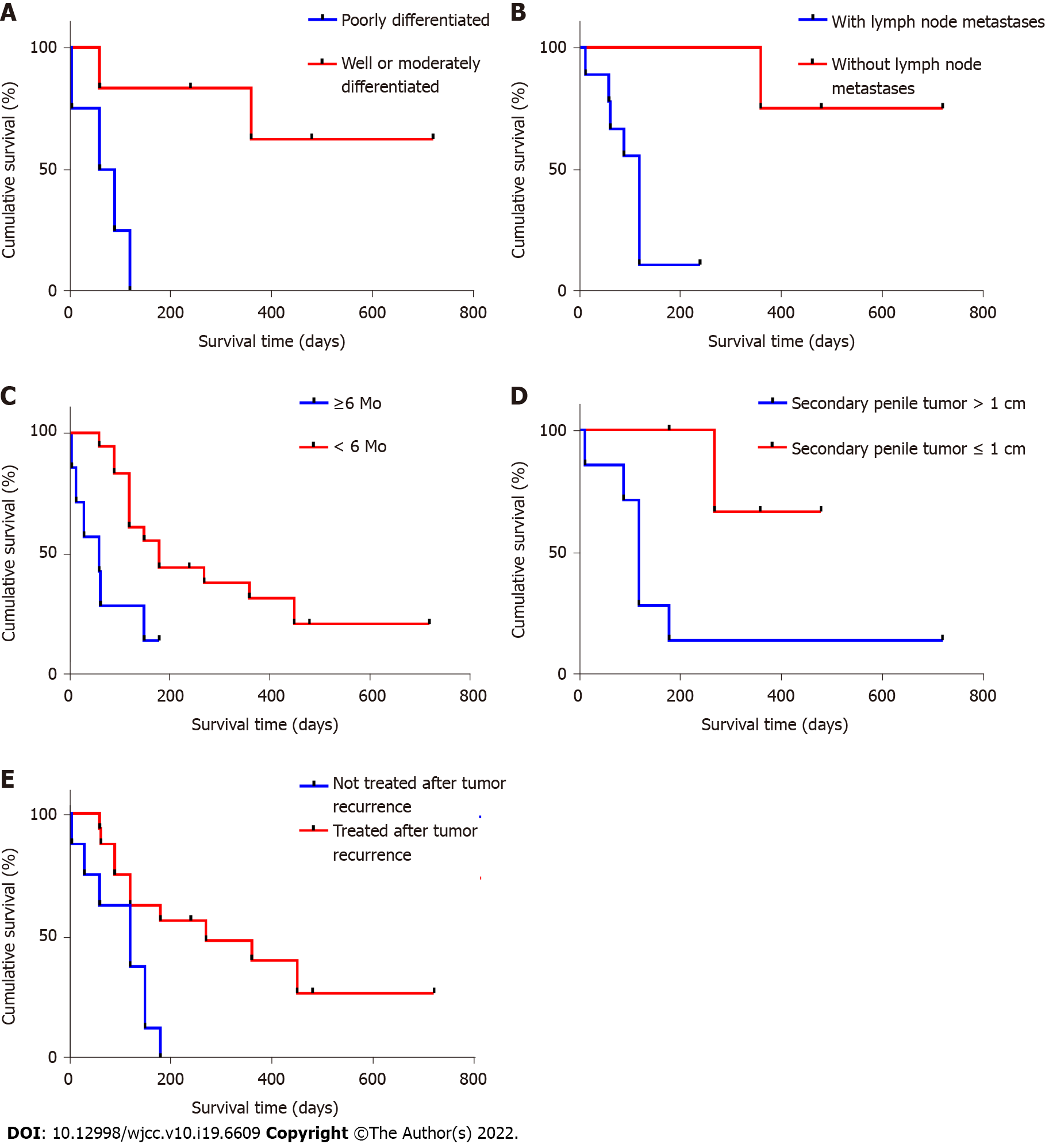Copyright
©The Author(s) 2022.
World J Clin Cases. Jul 6, 2022; 10(19): 6609-6616
Published online Jul 6, 2022. doi: 10.12998/wjcc.v10.i19.6609
Published online Jul 6, 2022. doi: 10.12998/wjcc.v10.i19.6609
Figure 1 Imaging and macroscopic examination of the secondary penile tumour.
A: Ultrasonography showed a hyper-echoic mass on the root of the left penis; B: Abdominal contrast-enhanced computed tomography indicated a nodular mass measuring 1.5 cm with mild enhancement; C: A rigid nodule with distinct margins found in the left penis during the operation; D: The resected specimen measured 1.5 cm in diameter.
Figure 2 Histopathological analysis and immunohistochemical examination of the resected specimen.
A: Haematoxylin and eosin staining (×200). Immunohistochemical staining for (B) CK20 (×200), (C) CDX2 (×200), and (D) prostate-specific antigen (×200).
Figure 3 General distribution of patients with penile metastasis from rectal carcinoma.
A: Distribution of patient age. The median age was approximately 60 years; B: The time to penile metastasis occurrence ranged from 4 to 312 mo, with a median time of 24 mo; C: Distribution of the size of secondary penile tumours; D: Distribution of the overall survival time after the diagnosis.
Figure 4 Risk factors for penile metastasis from rectal carcinoma.
A: Poorly differentiated rectal carcinoma (P = 0.011); B: Rectal carcinoma with lymph node metastasis (P = 0.009); C: Time to the occurrence of penile metastasis < 6 mo (P = 0.009); D: Diameter of secondary penile tumour > 1 cm (P = 0.036); E: Treatment abandonment (P = 0.007).
- Citation: Sun JJ, Zhang SY, Tian JJ, Jin BY. Penile metastasis from rectal carcinoma: A case report. World J Clin Cases 2022; 10(19): 6609-6616
- URL: https://www.wjgnet.com/2307-8960/full/v10/i19/6609.htm
- DOI: https://dx.doi.org/10.12998/wjcc.v10.i19.6609












